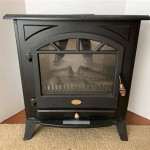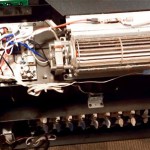DIY Baby Proofing for Fireplaces: Ensuring a Safe Home Environment
Fireplaces, while aesthetically pleasing and functional during colder months, present potential hazards to infants and toddlers. Their hard surfaces, sharp edges, and the allure of a potentially hot interior demand careful consideration when baby proofing. This article outlines practical, do-it-yourself (DIY) strategies for safeguarding young children from fireplace-related injuries.
Assessing Fireplace Hazards
Before initiating any baby proofing measures, a thorough assessment of the fireplace’s inherent hazards is crucial. This process involves identifying all potential risks to a crawling or walking child. Primarily, the hard hearth surface presents a significant impact risk. Sharp corners and edges of the fireplace surround can also cause injury. Furthermore, the firebox itself, even when not in use, can contain soot or debris attractive to inquisitive children and could pose a risk if it heats from sunlight.
An operational fireplace introduces additional dangers. Open flames, hot surfaces, and the potential for falling embers are significant concerns. Even after a fire is extinguished, the fireplace and surrounding materials can remain hot for an extended period, resulting in burns upon contact. All these aspects must be considered when formulating a comprehensive baby proofing plan.
Consider the materials used in the fireplace construction. Natural stone, brick, and tile can retain heat longer than other materials. Metallic components, such as fire screens or tool sets, also pose a burn risk. Evaluate the stability of the fireplace structure itself. Loose bricks or stones could potentially be dislodged, creating a falling hazard. The height and reach of the fireplace should also be taken into account. A fireplace that is easily accessible to a climbing child requires enhanced safety measures.
Implementing DIY Safety Barriers
Creating a physical barrier around the fireplace is often the most effective method of preventing access. Several DIY options are available, ranging from simple solutions to more elaborate constructions. The choice depends on the fireplace design, the available space, and the homeowner's skill level.
A popular option involves repurposing or modifying existing baby gates. Standard pressure-mounted gates, while suitable for doorways, may not be sturdy enough to withstand a determined toddler pushing against them. Consider using hardware-mounted gates, which are screwed directly into the wall for increased stability. These gates can be adapted to create a barrier around the entire fireplace, providing comprehensive protection.
For a more custom solution, consider building a wooden barrier. This involves constructing a frame from lumber and covering it with a mesh or solid panel. The dimensions of the frame should be tailored to the specific fireplace. Secure the frame to the wall using screws and brackets, ensuring that it is firmly in place. The mesh or panel should be made of durable material that is resistant to impact. Avoid using materials that could splinter or break easily. The height of the barrier should be sufficient to prevent a child from climbing over it.
Another option is to utilize interlocking foam play mats. These mats can be arranged around the fireplace to create a soft barrier that cushions against falls. While not as robust as a wooden or metal barrier, they can provide a degree of protection, especially for younger infants. Ensure that the mats are securely connected to prevent them from being easily dislodged. Adhesive strips can be used to further secure the mats to the floor.
Regardless of the chosen barrier type, it is crucial to ensure that it is easy for adults to access the fireplace for cleaning or maintenance purposes. Consider incorporating a hinged gate or a removable section into the barrier design. This will allow for convenient access while maintaining a secure enclosure for the child.
Addressing Sharp Edges and Surfaces
Beyond creating a physical barrier, it is essential to address the sharp edges and surfaces of the fireplace surround. These features pose a significant risk of cuts, bumps, and bruises. Several DIY solutions can mitigate these hazards.
Edge and corner protectors are readily available at most baby supply stores. These protectors are typically made of soft, impact-absorbing materials such as foam or rubber. They can be easily attached to the sharp edges and corners of the fireplace surround using adhesive strips. Choose protectors that are specifically designed for furniture and are durable enough to withstand repeated contact. Ensure that the adhesive is strong enough to prevent the protectors from being easily removed by a child. Periodic checks are necessary to ensure the protectors remain securely attached.
For a more discreet solution, consider using pool noodles. These inexpensive foam tubes can be cut to size and attached to the edges of the fireplace surround. Cut a slit lengthwise along the noodle and press it onto the edge. The foam will provide a cushioning effect, reducing the risk of injury from impacts. Secure the noodles with tape or adhesive to prevent them from slipping off. While pool noodles may not be the most aesthetically pleasing option, they are highly effective and cost-effective.
Another option is to use fabric padding. Wrap the edges of the fireplace surround with a thick layer of fabric and secure it with staples or tacks. Choose a fabric that is soft and durable, such as felt or fleece. The fabric will provide a cushion and prevent direct contact with the hard surface. This method is particularly suitable for fireplaces with complex shapes or ornate details.
For surfaces prone to heating quickly, consider using thermal barriers. These barriers can be applied directly to the surface and will provide a layer of insulation, reducing the risk of burns. Heat-resistant paint or sprays can also be used to mitigate the surface temperature. Always follow the manufacturer's instructions when applying these products.
Managing Fireplace Accessories and Tools
Fireplace accessories, such as pokers, tongs, and shovels, can be hazardous if left within reach of children. Similarly, firewood and kindling present potential choking hazards or sources of splinters. It is essential to implement measures to secure these items and prevent access.
Store fireplace tools in a secure location that is inaccessible to children. A locked cabinet or a high shelf are suitable options. If these options are not available, consider using a tool rack that can be mounted high on the wall, out of reach. Ensure that the rack is securely attached to the wall to prevent it from falling. Alternatively, purchase a fireplace tool set with a child-resistant latch or locking mechanism.
Store firewood and kindling in a covered container that is difficult for children to open. A large plastic tub with a secure lid is a good option. Keep the container away from the fireplace to reduce the risk of accidental ignition. Regularly inspect the firewood for loose pieces that could pose a choking hazard. Sweep up any loose debris to prevent children from ingesting it.
Fireplace screens are essential for preventing embers from escaping the firebox. However, standard fireplace screens may not be sufficient to prevent a child from reaching inside. Consider using a mesh screen that completely encloses the fireplace opening. Ensure that the mesh is made of durable material and that the screen is securely attached to the fireplace surround. Weighting the screen can help to reduce the chances of it being moved or pulled down.
When the fireplace is not in use, consider covering the firebox opening with a decorative cover or a piece of plywood. This will prevent children from accessing the interior of the fireplace and potentially finding hazards like sharp edges, soot, or small objects. Ensure that the cover is securely attached and cannot be easily removed.
Consider installing a carbon monoxide detector near the fireplace. Carbon monoxide is a colorless, odorless gas that can be produced by incomplete combustion. Exposure to high levels of carbon monoxide can be fatal. A carbon monoxide detector will provide an early warning in the event of a leak, allowing you to take action to protect your family.
Regular maintenance of the fireplace is crucial for ensuring its safety. This includes cleaning the chimney, inspecting the firebox for cracks or damage, and ensuring that the damper is functioning properly. Schedule a professional inspection at least once a year to identify any potential problems before they become hazardous.

Diy Baby Proofing Your Brick Fireplace Thisaveragemom

How To Baby Proof A Fireplace Diy Hearth Cushion Simply September

How To Baby Proof A Fireplace Diy Hearth Cushion Simply September

Farmhouse Fireplace Baby Gate Childproof Proof

Baby Proof The Fireplace Hearth With A Padded Bench Fosterpabedrooms Childproof Cover

Diy Contoured Fireplace Cover Babyproofing Seating

3 Ways To Baby Proof A Fireplace Wikihow

How To Childproof Your Fireplace Baby Proof

Diy Fireplace Babyproofing

Diy Fireplace Hearth Idea For Child Proofing
Related Posts








